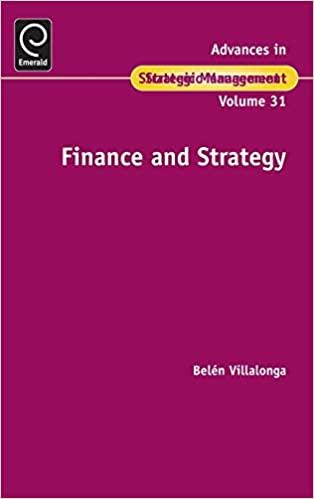Answered step by step
Verified Expert Solution
Question
1 Approved Answer
Can you guys please provide me with the solutions for all the questions provided? The following information relates to Questions 2227 Assorted Fund, a UK-based



Can you guys please provide me with the solutions for all the questions provided?
The following information relates to Questions 2227 Assorted Fund, a UK-based globally diversified equity mutual fund, is considering adding Tal- isman Energy Inc. (Toronto Stock Exchange: TLM) to its portfolio. Talisman is an independ- ent upstream oil and gas company headquartered in Calgary, Canada. It is one of the largest oil and gas companies in Canada and has operations in several countries. Brian Dobson, an analyst at the mutual fund, has been assigned the task of estimating a fair value of Talisman. Dobson is aware of several approaches that could be used for this purpose. After carefully considering the characteristics of the company and its competitors, he believes the company will have extraordinary growth for the next few years and normal growth thereafter. So, he has concluded that a two-stage DDM is the most appropriate for valuing the stock. Talisman pays semi-annual dividends. The total dividends during 2006, 2007, and 2008 have been C$0.114, C$0.15, and C$0.175, respectively. These imply a growth rate of 32 per- cent in 2007 and 17 percent in 2008. Dobson believes that the growth rate will be 14 percent in the next year. He has estimated that the first stage will include the next eight years. Dobson is using the CAPM to estimate the required return on equity for Talisman. He has estimated that the beta of Talisman, as measured against the S&P/TSX Composite Index (formerly TSE 300 Composite Index), is 0.84. The Canadian risk-free rate, as measured by the annual yield on the 10-year government bond, is 4.1 percent. The equity risk premium for the Canadian market is estimated at 5.5 percent. Based on these data, Dobson has estimated that the required return on Talisman stock is 0.041 +0.84(0.055) = 0.0872 or 8.72 percent. Dobson is doing the analysis in January 2009, and the stock price at that time is C$17. Dobson realizes that even within the two-stage DDM, there could be some variations in the approach. He would like to explore how these variations affect the valuation of the stock. Specifically, he wants to estimate the value of the stock for each of the following approaches separately. I. The dividend growth rate will be 14 percent throughout the first stage of eight years. The dividend growth rate thereafter will be 7 percent. II. Instead of using the estimated stable growth rate of 7 percent in the second stage, Dobson wants to use his estimate that eight years later Talisman's stock will be worth 17 times its earnings per share (trailing P/E of 17). He expects that the earnings retention ratio at that time will be 0.70. Dobson is doing the analysis in January 2009, and the stock price at that time is C$17. Dobson realizes that even within the two-stage DDM, there could be some variations in the approach. He would like to explore how these variations affect the valuation of the stock. Specifically, he wants to estimate the value of the stock for each of the following approaches separately. I. The dividend growth rate will be 14 percent throughout the first stage of eight years. The dividend growth rate thereafter will be 7 percent. II. Instead of using the estimated stable growth rate of 7 percent in the second stage, Dobson wants to use his estimate that eight years later Talisman's stock will be worth 17 times its earnings per share (trailing P/E of 17). He expects that the earnings retention ratio at that time will be 0.70. III. In contrast to the first approach above in which the growth rate declines abruptly from 14 percent in the eighth year to 7 percent in the ninth, the growth rate would decline linearly from 14 percent in the first year to 7 percent in the ninth. 22. What is the terminal value of the stock based on the first approach? A. C$17.65. B. C$31.06. C. C$33.09. 23. In the first approach, what proportion of the total value of the stock is represented by the value of second stage? A. 0.10. B. 0.52. C. 0.90. 24. What is the terminal value of the stock based on the second approach (earnings multiple)? A. C$12.12. B. C$28.29. C. C$33.09. 25. What is the current value of the stock based on the second approach? A. C$16.24. B. C$17.65. C. C$28.29. 26. Based on the third approach (the H-model), the stock is: A. undervalued. B. fairly valued. C. overvalued. 27. Dobson is wondering what the consequences would be if the duration of the first stage was assumed to be 11 years instead of 8, with all the other assumptions/estimates remain- ing the same. Considering this change, which of the following is true? A. In the second approach, the proportion of the total value of the stock represented by the second stage would not change. B. The total value estimated using the third approach would increase. C. Using this new assumption and the first approach will lead Dobson to conclude that the stock is overvaluedStep by Step Solution
There are 3 Steps involved in it
Step: 1

Get Instant Access to Expert-Tailored Solutions
See step-by-step solutions with expert insights and AI powered tools for academic success
Step: 2

Step: 3

Ace Your Homework with AI
Get the answers you need in no time with our AI-driven, step-by-step assistance
Get Started


